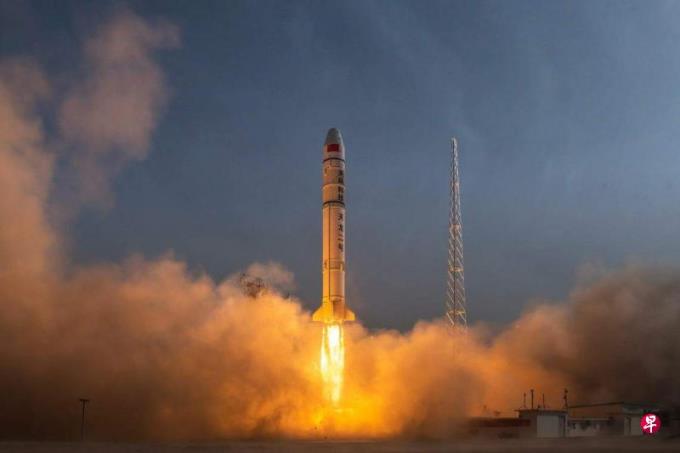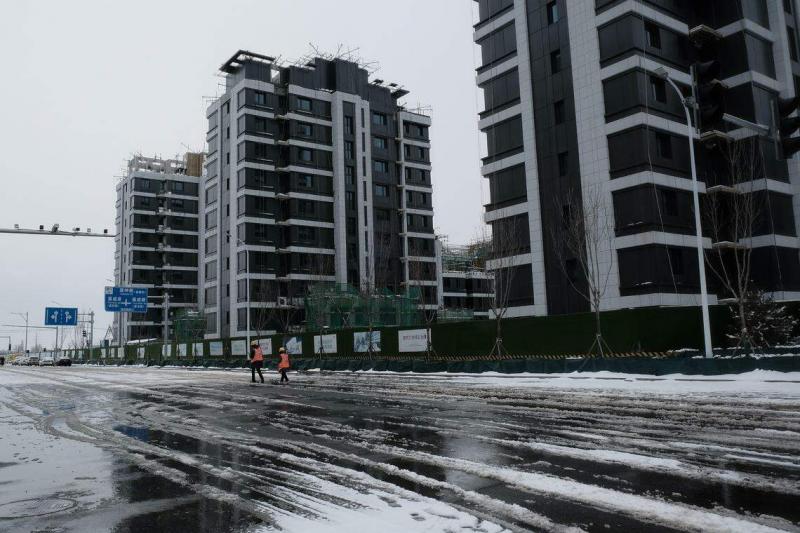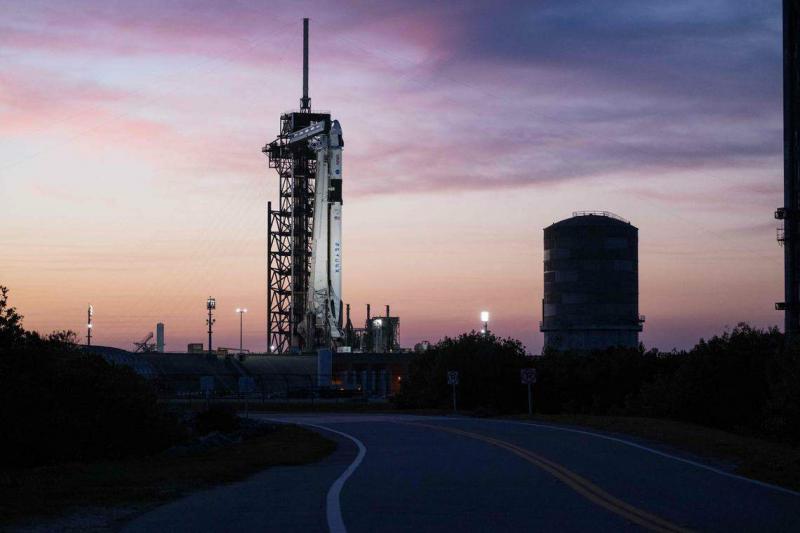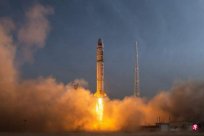
Commercial aerospace track has become a must -have place between great powers. In December last year, the CPC Central Committee Economic Work Conference added content on commercial aerospace and opened a new chapter for the development of this field.In what stage of China's commercial aerospace industry?What is the strategic significance of commercial aerospace?What are the advantages and disadvantages of China's official commercial aerospace development model?
Entering Erhai Town, Yizhuang New Town, there are sporadic houses, old factories, and blockbusters waiting for the development of the developed land on both sides of the silent streets.
The town that has been carried out for nearly an hour's drive from the center of Beijing seems to be asleep, but it will soon become a high -tech commercial space base in China in April this year. A simple textile factory with a simple appearance will be converted into a leading space for China.The company's "Rocket Street" was pushed to the forefront of Chinese commercial aerospace technology.
The Beijing Municipal Government announced in February this year that it will build China's first commercial aerospace common scientific research and production base in Erhai Town, and open the air and sky district in the local area.Street.The scale of this total building will reach 140,000 square meters of facilities. Construction will be started in April and will be put into use at the end of next year.
 "/>
"/>

The large -scale Rocket Street Construction Project marks that China has developed for nearly nine years of commercial aerospace industry and is about to accelerate its take -off.China officially issued a long-term development plan for national civil space infrastructure in 2015 (2015-2025), indicating that supporting and guiding social capital to participate in the construction and application of national civil space infrastructure construction and development, and kicked off the development of China's commercial space.
In the context of the fierceness of the Sino -US Aerospace Competition, the CPC Central Committee's Economic Work Conference in December last year added content on commercial aerospace, indicating that it is necessary to create a "new industry track" including commercial aerospace, which is for China.The development of commercial aerospace is injected into catalysts.
In the past few years, governments from all over China have also increased firepower and are committed to cultivating space giants comparable to American commercial space overlord SpaceX.In January of this year, Beijing issued a plan to accelerate the innovation and development of commercial aerospace, and proposed that by 2028, it will introduce and cultivate high -tech enterprises, specialized specialized new enterprises and unicorn enterprises to build the goals of special industrial agglomeration areas and characteristic industrial parks.
Government of Shanghai, Tianjin, Chongqing, and Shenzhen have also introduced support policies for the aerospace industry in the past few years.
The explosive growth of Chinese commercial aerospace companies
Officially promoting the explosion of China's commercial aerospace field.Enterprise investigation data show that there are more than 210,000 space and satellite -related enterprises in China; 50,1400 newly added last year, an increase of 42.84%year -on -year.
China sent a total of 270 satellites into space last year, of which 137 were commercial satellites, accounting for 65%.China's commercial aerospace also refreshed the launch record in the same year. The total number of rail -level aerospace launch reached 67 rounds, accounting for 30%of the global launch, second only to the United States, which accounted for 52%of the world's total, ranking second in the world.
As of now, including Tianbing Technology, Blue Arrow Aerospace, and Oriental Space, at least six private space companies have successfully launched the rocket.
The person in charge of Tianbing Technology said in an interview with Lianhe Morning Post: "Under the strong traction of the demand for the satellite Internet market, China is facing unprecedented broad development opportunities."
Yao Song, co -founder of Oriental Space and President Yao Song, pointed out in an interview that China's commercial space market is "a very clear emerging industry that will grow rapidly in the next 10 years."
He believes that China's commercial aerospace has initially established capabilities in the past 10 years, and has a good foundation in the fields of rocket launch, satellite manufacturing, measurement and control."In the next few years, as the next generation of communication technology, the satellite Internet is a very important infrastructure. China is very willing and capable of strengthening construction. As an important application demand party, it will draw commercial rockets, satellite manufacturing, satellite loads in commercial aerospaces.Wait for the rapid development of multiple fields. "
The relevant person in charge of the blue arrow aerospace said in an interview that China has the advantages of a complete industrial system, the entire category of industrial development capabilities, low production costs, and a large number of engineer talent teams.Chinese commercial aerospace provides broad market opportunities. "
Analysis: Commercial Space is an important part of the strategic competition between China and the United States
Commercial aerospace has become the second track in the Sino -US Aerospace competition.The Tyber think tank research shows that the global commercial aerospace industry has entered the golden period of development from 2023 to 2028. By 2025, China's market size alone will reach 2.8 trillion yuan (S $ 520 billion).
Ian Christensen, director of the private sector of the Security World Foundation, judged in an interview that "the aerospace field is regarded as a emerging industry of strategic and national interests by many countries, which is no exception for China."
He said: "Many projects in the field of Chinese commercial aerospaces, such as broadband satellite Internet, satellite navigation services, and satellite observation and remote sensing projects, all provide services to meet domestic needs and infrastructure. This also includes supporting electronics.Business.
At the political level, Christensen pointed out that the Chinese government has seen the development of the United States and Europe in the aerospace field, so he hopes to enhance competitiveness in this field; the space capabilities are in terms of economic, military purposes, or diplomatic perspectives., Are part of the competition between China and the United States.
Chen Shuting, chairman of the Singapore Aerospace Consulting Company Space Faculty, said in an interview that the global aerospace industry was worth US $ 546 billion (S $ 734.8 billion), and most of the industries belonged to commercial applications.If China wants to establish a complete aerospace system, it will inevitably be included in the development of commercial aerospace.The scope of commercial aerospace applications is very extensive, including the collection and processing of remote sensing data, as well as application software development such as agriculture, transportation, environmental monitoring, and disaster assessment.
Low -track satellites become major arena countries with the help of private enterprise forces
Satellite system is the most intense area of competition in commercial aerospace. The track and radio spectrum are used as a limited resource. The existing principles of the international telecommunications alliance means that countries must race with time and take the lead in space to occupy a place.
Data show that the current low -orbit satellite has occupied the leading position of aerospace development. Among the global launch satellites in 2022, low -orbit satellites account for 98.9%.
However, the capacity of medium and low -oriented among spaceLimited, the near -ground orbit from 300 to 1,000 kilometers can only accommodate no more than 60,000 satellites; the principle of first -to -first, means that once the track is full, the latecomer cannot use the orbit.
Regardless of whether from national defense strategies or commercial considerations, low -altitude tracks are important strategic resources for countries to step up their layout. One of the important reasons for the development of commercial aerospace is to use the power of private enterprises to draw in the field of low -orbit satellites in the field of low -orbit satellitesHead.
Starlink launched by SpaceX, the United States, is currently the largest low -orbit satellite constellation in the world's largest planned scale and the largest number of launch, with a total scale of nearly 420,000 satellites.

China Star Network applied to the GW constellation plan to the International Power Federation in September 2020, with a total of 12,992 satellites, forming the Chinese version of the satellite Internet.Another important satellite Internet launch plan "G60 Star Chain" in China has more than 10,000 satellites.With the current launching capacity of commercial rockets, it takes at least 2030 to digest huge launch needs.Commercial aerospace is currently affecting the neck link of the development of satellite Internet.
The person in charge of Tianbing Technology revealed in the interview with Lianhe Morning Post that, under the dual blessing of policy support and capital, the size of the satellite launch market from 2015 to 2021 increased from 376.4 billion yuan (RMB, with the same below, 71.6 billion yuan) to increase to to reached to to the same increase to to 71.6 billion yuan) to1.26 trillion yuan, a compound annual growth rate of 22.35%.With the normal market growth rate of the past five years, the size of the commercial space market in 2025 will exceed 2.83 trillion yuan.
In addition to satellite occupation, commercial aerospace companies have also played an important role in expanding their national space discourse rights.
Michelle Hanlon, co -director of the Aerospace Law Project of Mississippi University, pointed out in an interview that "from a strategic perspective, private enterprises can do things that some countries cannot do."There are many gaps in existing outer space treaties.It also requires them to ensure that all activities "meet" the provisions.Such a statement provides more flexible interpretation space for private aerospace companies.
Hanlun said: "The United Nations Commission of Peaceful Utilization of the Outer Space is also promoting allowing people to allow business stakeholders to have the right to speak on how to supervise future space activities. If the number of commercial entities in other countries exceed China, this may be considered to be considered to makeChina is in an unfavorable position "
National leading model is challenge and opportunities
The highly independent commercial aerospace development model of the United States is regarded as one of the key to SpaceX to be able to achieve technological breakthroughs quickly;The Chinese aerospace giants who can catch up with SpaceX are bred.
 "> ">">/>
"> ">">/>
Most of the scholars of interviewees believe that the official strong leadership is both an opportunity and a challenge for Chinese private aerospace companies.
Roger Handberg, an expert in Aerospace Policy at the University of China Florida, pointed out in the United Morning Post that Chinese aerospace technicians have huge potential.opportunity."Commercial aerospace is related to the future, not the route planned by the government, which makes it wonderful and uncertain."
He takes the United States as an example that the US government has realized after World War II that even the pressure on the National Aeronautics and Space Agency (NASA) and military bureaucrats must be allowed to allow commercial aerospace companies to develop; at present, the development of commercial space in the United States;It has exceeded NASA's original expectations, and commercial aerospace has also promoted the development of national space
Handberg said: "Whether the Chinese government is willing to bear risks is a question that only officials can answer. If the official actively provides support, China's commercial aerospace development will be faster than other places."
Chen Shuting's interview and judging that the Chinese government's influence on the field of commercial aerospace plus language barriers may affect China's attractiveness to overseas commercial aerospace companies, which has a certainlimit.To the extent that China can export commercial aerospace services to other countries and promote cooperation with foreign countries, it is also unknown.
Namraata Goswami, a professor of aerospace policy at the University of Arizona University, analyzed in an analysis that one of the biggest advantages of Chinese commercial aerospace is official support for government allowances and can use national launch fields.Chinese officials have provided private aerospace companies with clear guidelines in the next decades. Long -term and clear goals are another advantage of promoting commercial aerospace development.
However, this may also put pressure on private enterprises; Goswami pointed out that Chinese private aerospace companies face official strict supervision, and they must report to the official company activities, including network security, aerospace security, and the latest technologies.Development and other aspects may limit their innovation ability.
Although China's commercial aerospace has developed rapidly, it still lags greatly in the United States.Gosvami predicts that China's commercial aerospace may get around 2030 to catch up with the current level of the United States. The only factor that may slow down the development of commercial aerospace in the United States is that the US government lacks strategic consistency and lack of ambitions for aerospace development.


